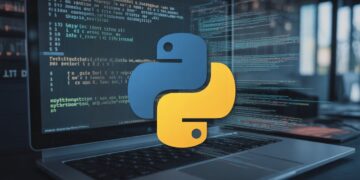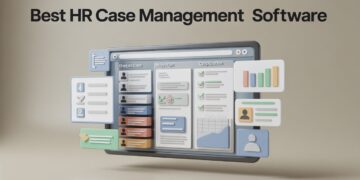USB data recovery software helps you retrieve deleted, formatted, or lost files from USB drives, external storage, and even corrupted partitions. In 2025, as businesses and individuals rely more on portable storage for backups and file transfers, data recovery tools have evolved with AI-powered scanning, faster algorithms, and enhanced compatibility with large-capacity USB 3.2 and 4.0 drives.
Whether it’s accidental deletion, malware, or hardware failure, the right data recovery program can restore documents, photos, and system files with near-perfect precision. Some even allow recovery from unbootable Windows systems or encrypted partitions making them essential for IT professionals and regular users alike.
How Data Recovery Works (Simplified)
When you delete a file, Windows only removes the file’s “address” from the system index not the data itself. Until that storage space is overwritten, recovery tools can scan and reconstruct it using deep sector-level algorithms.
Modern tools in 2025 use AI and pattern recognition to locate fragmented files faster and restore higher-quality data even from damaged USB drives.
Types of Data Recovery
Understanding recovery categories helps you choose the right tool:
-
Hard Drive Recovery – for internal or external HDD/SSD failures.
-
Removable Drive Recovery – USB flash drives, SD cards, etc.
-
Optical/Tape Recovery – for legacy or backup media.
-
Digital/Cloud Recovery – for synced or partially backed-up files.
Is It Safe to Use Data Recovery Software?
Yes as long as you use reputable tools. Leading software brands employ read-only operations, ensuring no additional overwriting occurs. Avoid unverified downloads or cracked versions, as they can contain spyware or worsen data corruption.
Top 14 Best USB Data Recovery Software for Windows (2025 Update)
Below are the best recovery tools tested and rated based on speed, accuracy, supported formats, ease of use, and price.
1. EaseUS Data Recovery Wizard
Best for: Overall reliability and usability
EaseUS continues to dominate in 2025 with its AI-enhanced scan engine that can recover data from USBs, SSDs, and formatted drives in minutes. It supports over 1,000 file formats and offers real-time file preview.
Highlights:
-
Two scan modes: quick and deep
-
Supports NTFS, exFAT, FAT32, and ReFS
-
AI auto-repair for corrupted photos/videos
-
Lifetime license available
2. Stellar Data Recovery
Best for: Professional and enterprise recovery
Stellar’s 2025 edition uses smart imaging and predictive data mapping for superior accuracy. It recovers from formatted or damaged USB drives, cameras, and RAID setups.
Key Features:
-
File repair for photos and videos
-
Bootable recovery for crashed Windows
-
Supports 1000+ file types
-
Free recovery up to 1 GB
3. Tenorshare 4DDiG Data Recovery
Best for: Quick scans and intuitive interface
Tenorshare 4DDiG stands out for its modern UI and smart categorization that groups recovered files by type and relevance.
New in 2025:
-
“Smart Filter AI” sorts files by corruption level
-
Dark mode interface
-
Supports recovery from BitLocker drives
4. Disk Drill
Best for: Beginners and students
Disk Drill is simple yet powerful, offering up to 500 MB free recovery and detailed recovery insights. It supports USB, SD cards, and internal drives with a pause-and-resume scan feature.
Why it’s great:
-
Clear visuals of scan progress
-
File previews before restoring
-
Cross-platform use (Windows + macOS)
5. Recuva
Best for: Free and lightweight recovery
From Piriform (creators of CCleaner), Recuva remains a fan favorite for basic file recovery.
Pros:
-
Portable (no installation needed)
-
Deep scan mode for thorough searches
-
Works even on Windows 11
Limitations:
-
Interface is outdated
-
Less accurate on severely corrupted drives
6. R-Studio
Best for: IT experts and advanced users
R-Studio is a forensic-grade recovery tool used by data recovery labs. It supports RAID reconstruction, damaged partitions, and multi-drive recovery.
Expert Insights:
As of 2025, R-Studio integrates hex-level analysis and S.M.A.R.T. monitoring, making it ideal for technicians who need detailed control.
7. PhotoRec
Best for: Open-source flexibility
Despite its name, PhotoRec recovers over 480 file formats from USBs, hard drives, and SD cards. It’s command-line-based, but it’s fast, safe, and completely free.
Tip: Pair it with TestDisk (from the same developer) for partition recovery.
8. Ontrack EasyRecovery
Best for: Enterprise and RAID recovery
Ontrack has been a trusted name in the recovery world for decades. Its 2025 version includes AI validation for recovered file integrity.
Versions:
-
Free (1GB)
-
Home / Professional / Technician / Toolkit editions
-
RAID and encrypted disk support
9. CrashPlan for Small Business
Best for: Automatic backups + recovery
Technically a backup tool, CrashPlan doubles as a real-time data recovery solution that maintains older file versions perfect for SMBs.
Why it’s powerful:
-
Encrypted continuous backup
-
Recovers deleted files anytime
-
Great for ransomware recovery
10. iBoysoft Data Recovery
Best for: Simple USB recovery and partition repair
It offers two modes Quick Scan and Deep Scan and includes pre-recovery previews to ensure the right files are restored.
New in 2025:
Improved compatibility with Windows Server 2025 and exFAT+ partitions.
11. DMDE Free Edition
Best for: Portable recovery and partition rebuild
DMDE allows you to recover deleted partitions and clone drives without installation ideal for emergency situations.
Unique Feature:
Rebuilds RAID setups manually something most free tools can’t.
12. DiskGenius
Best for: All-in-one recovery and partition management
DiskGenius combines data recovery with disk cloning, partition repair, and virtual disk support. Though the UI feels outdated, its accuracy is excellent.
Pro Insight:
Can recover data directly from VMware or VirtualBox images a rare 2025 advantage.
13. Restoration
Best for: Lightweight recovery without installation**
Restoration remains a simple, no-frills program ideal for quick USB recovery.
Advantages:
-
Portable
-
Minimal CPU use
-
Simple single-window interface
Limitation:
-
No support for modern file systems like ReFS or APFS
14. UnDeleteMyFiles Pro
Best for: Quick, free file undelete tasks**
Despite its old-school look, this free utility includes tools like email recovery, disk snapshot, and secure file deletion all in one package.
Best For: Users who want a free solution without setup hassles.
People Also Ask (PAA) Section
Q1: Which USB recovery tool is best for large files (videos, backups)?
A: Stellar Data Recovery and R-Studio are the best for large or corrupted video and backup files.
Q2: Can I recover data from a physically damaged USB?
A: Only partially. If the device isn’t detected, try Ontrack or contact a professional recovery lab.
Q3: What’s the safest free recovery software in 2025?
A: Recuva and PhotoRec are still the most trusted free options with no bundled malware.
Q4: Can AI really improve data recovery?
A: Yes newer tools like EaseUS and Tenorshare 4DDiG use AI to detect file fragments and rebuild damaged data more accurately.
Conclusion
In 2025, USB data recovery has evolved from a niche process into a necessity for businesses, creators, and professionals. Whether you’re restoring a family photo or a corporate database, tools like EaseUS, Stellar, and Disk Drill make the process faster, smarter, and safer.
Before choosing, consider your use case:
-
For everyday recovery Disk Drill or Recuva
-
For deep forensic recovery R-Studio
-
For enterprise or encrypted drives Ontrack or Stellar
Always create regular backups after recovery to avoid future data loss.









